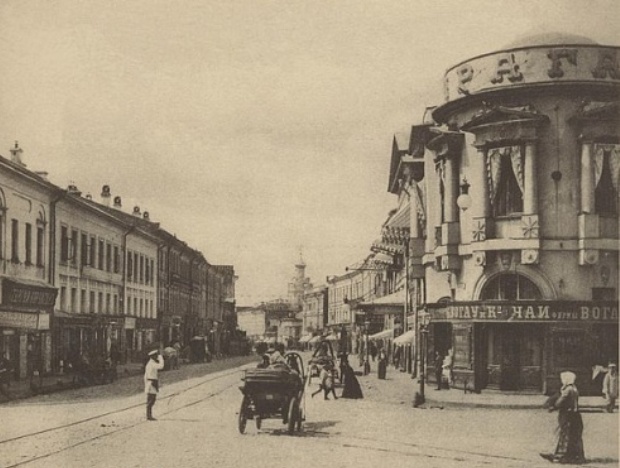The Hero Enters
The title
The Russian title of this chapter is Явление героя [Yavleniye geroya] which could be translated as The apparition of the hero. The word Явление [Yavleniye] or Apparition is often used in the Bible when Christ shows himself to the people or his disciples.
Clean-shaven...
The master is introduced as «a clean-shaven, dark-haired man of approximately thirty-eight, with a sharp nose, anxious eyes, and a wisp of hair hanging down on his forehead». Bulgakov himself was 38 years old in 1929. Some readers recognize Nikolai Vasilyevich Gogol (1809-1852) in this description. Gogol burned the manuscript of the second part of Dead Souls.
Here we sit
The verb which is used by Bulgakov in the Russian text - Сидим [sidim] - means we sit, but is also used to say «we are in prison».
I cannot stand noise, turmoil, force, or other things like that
The master's aversion to noise and screaming almost literally repeats the words of Wagner in Faust.
Yesterday in a restaurant I socked one type in the mug
Such acts of vandalism were characteristic of workers and peasants in the 1920s in the Soviet Union. The authorities were very concerned about this kind of «social promiscuity», which was explained by a «lack of cultural needs» and by the low educational level of the population. Characteristic of this time was also a widespread anti-Semitism.
The incident in which Bezdomny was involved, was inspired by the behaviour of the poet Sergei Alexandrovich Yesenin (1895-1925), who has been married a short time with the 18 year older American dancer Isadora Duncan (1877-1927). Yesenin and Duncan had met each other at The Stables of Pegasus, a cafe which was located in the basement of the building at Bolshaya Sadovaya no. 10. Yesenin hit his wife repeatedly and in 1923 he was put into a psychiatric hospital. One year later he was, for reasons of drunkenness, assault and anti-Semitic incidents, banned from the restaurant of the Herzen House, the writers’ house which was the prototype of the Griboedov House from The Master and Margarita.

Sergei Yesenin and Isadora Duncan
You dislike my poetry?
The master dislikes Ivan's poetry without ever having read it. Bulgakov is commenting on the low quality and the unoriginal nature of accepted and published Soviet poetry. If Ivan is published and famous, it means he can't be good!
In 1936, when the working title of The Master and Margarita was The Great Chancellor, the master replied:
«On the wide river, where the carp jumps,
over the fulness of the sun, the wind and the intensity of the fields strength,
and harmony...
did you write this?»
Is your poetry good? «Monstrous!»
Bulgakov writes indeed Чудовищны [Chudivishchny] or monstrous. Even Ivan is aware that his officially-approved poems are no good. The first English translator, Michael Glenny (1927-1990), got this a little wrong in 1967. He translated Ivan’s reaction as «stupendous».
Currency in the ventilation, Pushkin, Kurolesov
Bulgakov introduces the character Kurolesov without telling us who he is or where he comes from. The explanation will follow later in the novel, in chapter 15. The new arrival in room 119 is Nikanor Ivanovich, and we will see that he knows Kurolesov as the actor who recites excerpts of The Covetous Knight by the Russian poet Aleksandr Sergeevich Pushkin (1799-1837) in Nikanor Ivanovich’s dream.
You can read more on Kurolesov in the Characters section of this website by clicking the arrow below.
The critic Latunsky
The critic Latunsky is probably a hint at one of Bulgakov's indefatigable enemies, Olaf Semenovich Litovsky (1892-1971), the chairman of the Главный репертуарный комитет (Главрепертком) [Glavny repertuarny komitet] (Glavrepertkom) or the Central Committee for Repertoires. In a debate at the Meyerhold Theatre, Litovsky had introduced the term Булгаковщина (Bulgakovshchina) or Bulgakovism after the first performances of Bulgakov's play Days of the Turbins.
Litovsky actually lived in the building at Lavrushinsky pereulok 17, which Bulgakov will use in Chapter 21 as a prototype for the Dramlit house. Moreover, he lived on the seventh floor, in apartment 84, exactly the apartment which Margarita will destroy in that chapter.
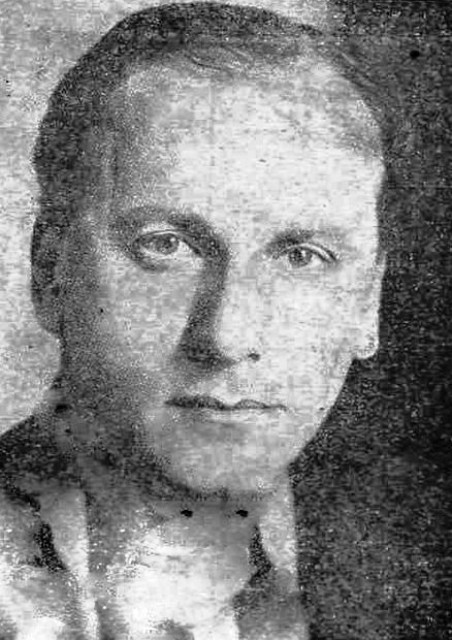
Olaf Semenovich Litovsky
You can read more on Latunsky in the Characters section of this website by clicking the arrow below.
Mstislav Lavrovich
The Lavrovich character is a parody of Vsevolod Vitalyevich Vishnevsky (1900-1951), a writer and playwright who also was an archrival of Bulgakov. He prevented the production of his plays Бег [The Flight] and Мольер [Molière].
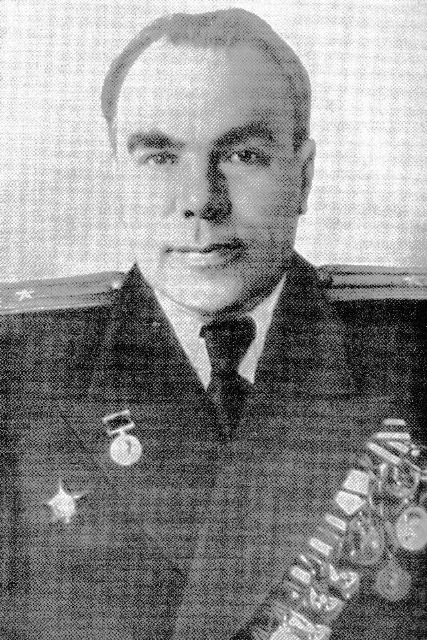
Vsevolod Vitalyevich Vishnevsky
You can read more on Lavrovich in the Characters section of this website by clicking the arrow below.
The opera «Faust»
Bulgakov mentions his favorite opera here, while elsewhere he merely uses the details, or only indirect references. But that’s not enough in this situation, because Ivan obviously did not understand the hints which could have make him understand that he met the devil at Patriarchs’ Ponds.
A black cap with the letter «M» embroidered on it in yellow silk
«I see, I see, Ai-yai-yai, what a thing!», Ivan rasped after the master’s hint to Faust. The master shows himself to Ivan both in profile and full face, to prove that he is a master. Besides, Bulgakov himself had such a cap with the letter «M» embroidered on it. Elena Sergeevna Shilovskaya (1893-1970) had made it for him.
In English, many people refer to the protagonist of Bulgakov's novel by writing «the Master», with a capital «M». However, throughout the novel, Bulgakov consistently writes мастер [master], with a small «м». Which is logic, since a capital letter would turn the common generic noun мастер [master] into a proper name, and the master «no longer has a name», as you will read in the next paragraph.
So, why do so many people, including scholars and translators, write «the Master»? The first reason for this misunderstanding may be the fact that the Russian title of the novel is written as Мастер и Маргарита [Master i Margarita], with a capital «М». But that is due solely to the fact that it is the first word of the title, since the Russian language has got no articles like «the» or «a». If Bulgakov had reversed the title, like in Маргарита и мастер [Margarita i master], the word мастер [master] would have been without a capital.
Confused? I haven't finished yet. In English, nouns, adjectives and verbs are generally capitalized in titles. Consequently, in the title of the novel and in its chapters titles, «The Master» should be capitalized, but not in the text. So, in the text of The Master and Margarita, the master should be written with a small «m», except in the titles of the chapters. Yet, some English translators like Richard Pevear and Larissa Volokhonsky, write «the Master» across the board, and the French translator Claude Ligny writes «le Maître». But other translators follow Bulgakov's logics, like the Dutch Marko Fondse with «de meester», the Spanish Amaya Lacasa Sancha with «el maestro» and the British Michael Glenny with «the master».
I no longer have a name
The master's name is never revealed in the novel. By saying «I no longer have a name», he actually means: «I lost my identity».
In the movie picture The Master and Margareth (1972) the Serbian film director Aleksandar Petrović (1929-1994) made, in my humble opinion, an unforgivable mistake by giving a name to the master. Personally I think you should not do it but, if you really want, you can watch it here.
The name which Petrović gave to the master, is the name of the protagonist of A Theatrical Novel, one of Bulgakov's last novels, also known as Black Snow.
In the television series Master i Margarita from 2005, director Vladimir Bortko (°1946) refers to this naming. In episode 8, when Behemoth returns the manuscript of the novel to the master, we see briefly, but clearly, the title page on which the same name is mentioned as author.
From what languages?
This dialogue is very similar to a scene from The Count of Monte Cristo, a novel written by the French author Alexandre Dumas (1802-1870), completed in 1844. Edmond Dantès, the main character, meets the «mad priest» Abbé Faria when they are both imprisoned at the Château d'If in the Mediterranean Sea. Faria had tried to tunnel his way to freedom but, due to wrong calculations, he ended up in Dantès' cell. The two became friends and one of the dialogues they had was the following:
(Dantès) «You are, doubtless, acquainted with a variety of languages?»
(Faria) «Yes, I speak five of the modern tongues - that is to say, German, French, Italian, English, and Spanish. And by the aid of ancient Greek, I learned modern Greek. I don't speak it so well as I could wish, but I am still trying to improve myself.»
By the way, in the Russian text, Bezdomny asks «С какого языка?» or «From what language?», in the singular form. So he supposed the master only spoke one foreign language - which was already a feat in the Soviet Union. No wonder that he enviously whispered «Oh, my!» when he heard that there were five.
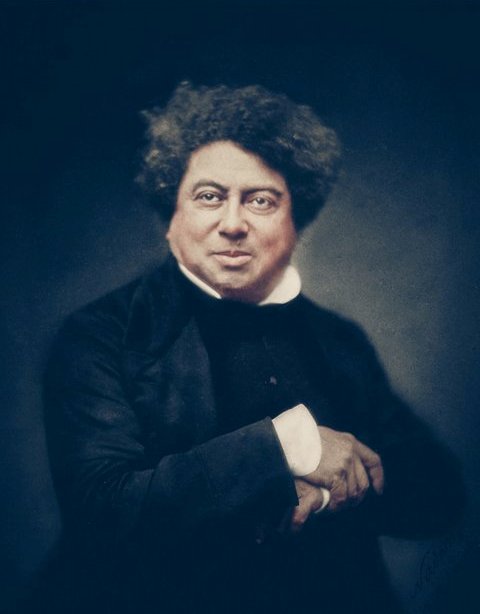
Alexandre Dumas
One day he won a hundred thousand roubles with a state bond
Lotteries were arranged by the Soviet government to fund various activities. One way to do this was by the emission of state bonds. Citizens were «asked» to buy state bonds at work, like the master did it at the museum. Often there was a lottery connected to it by which some bonds could win an important amount of money. Because there were not many safe places, the master kept his bond in the basket of dirty laundry.
A room on Myasnitskaya
The Мясницкая улица [Myasnitskaya ulitsa] or Butchers’ street, connects Lubyanka square with Turgenevskaya square, close to Chistiye Prudy. Between 1935 and 1990 it was named Kirov street. Nowadays, you can find in this street one of Moscow's nicest book shops, the Biblio-Globus. It is situated next to the Mayakovsky Museum.
Two rooms in the basement of a little house in the garden
During the period of the New Economic Policy (NEP) from 1921 to 1928, private persons were allowed to build and possess small houses in the Soviet Union. The prototype of the basement of the master is situated in Mansurovsky pereulok no. 9 in Moscow and belonged to the brothers Sergey Sergeevich Topleninov and Vladimir Sergeevich Topleninov. Sergey, the younger brother, was stage designer and make-up artist at the Moscow Art Theatre MKhAT.
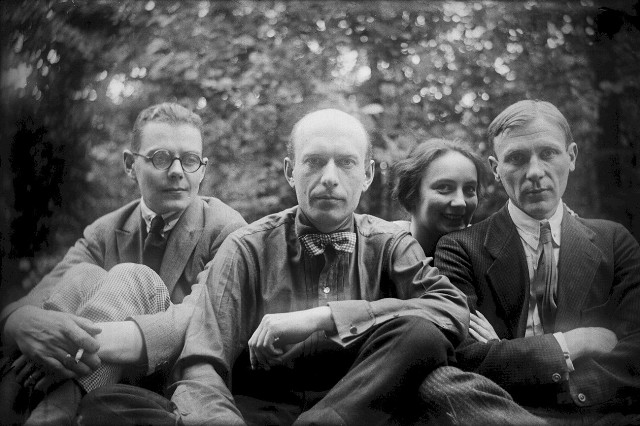
Sergey Topleninov, Nikolay Lyamin, Lyubov Blozerskaya and Mikhail Bulgakov
Vladimir was an actor at various theatre companies. When Sergey got married he moved out and a part of the house was rented to the playwright and scriptwriter Sergey Alexandrovich Yermolinsky (1900-1984) and his wife Maria Artemievna Chimishkian (1904-?). From 1916, Bulgakov was there often. He worked there on The Master and Margarita and he read parts of it to his friends. Bulgakov’s second wife Lyubov Yevgenyeva Belozerskaya (1894-1987) didn’t trust Yermolinsky, though. She called him «a man with two faces», and said that Bulgakov used him as the prototype for the Aloisy Mogarych character in The Master and Margarita.
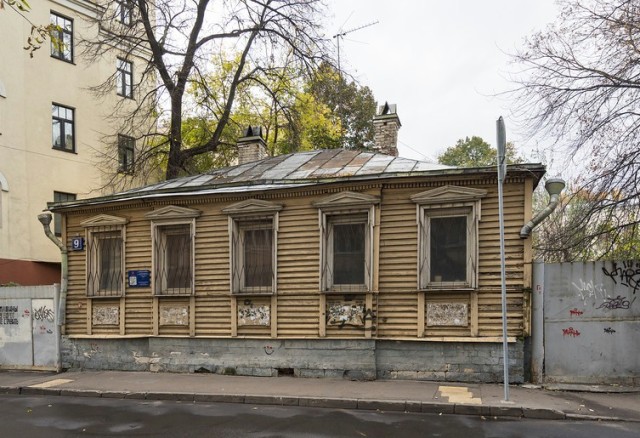
Mansurovsky pereulok no. 9
You can read more on the basement of the master in the Locations section of the Master & Margarita website by clicking the arrow below.
A front hall with a sink in it
Some older buildings in Moscow did not have running water yet. The master is very pleased with his sink, he mentions it «with special pride». The reason for this pride is in the fact that in the communal apartments in that time there were only sinks in the shared rooms of kitchen and bathroom. So, other than most people, the master could wash himself privately.
Actually, there was a porcelain sink in the front hall of the Topleninov house, and there really was, «only four steps away, near the fence, lilacs, a linden and a maple». The house was built in 1834 and it is a miracle that it still exists. Today, it is completely ruined and doesn't look as a house where you want to live.
In the movie picture [Est] Ouest from 1999, the French director Régis Warnier (°1948) shows some aspects of the allotment of rooms in a communal apartment in the Soviet Union.
The last words of the novel
The master already knew that the last words of his novel would be «…the fifth procurator of Judea, the equestrian Pontius Pilate». There is some disagreement about the question whether Pilate was the fifth or the sixth procurator of Judea. Bulgakov chose for the fifth, according to some because it offered him a nicer alliteration in Russian: пятый прокуратор Иудеи, Понтий Пилат [pyatny prokurator Yudey, Ponty Pilat]. He used more or less the same words to finish The Master and Margarita.
Yet we fear that this description is one of the few mistakes of Bulgakov about the Palestine of that time, for the title «procurator» was not yet used in the reign of Emperor Tiberius (42 BC-37) to designate the governor of a Roman province. Pilatus was a «prefect». It was only under Claudius I (10BC-54), who was emperor from 41 to 54, that the title «procurator» was introduced. Despite the fact that there was no noteworthy difference in functions, Pontius Pilate was not «the fifth procurator», but «the fifth prefect of Judea».
There was a wonderful restaurant on the Arbat
The wonderful restaurant is the Praga, situated at Arbat no. 2. It's the first building you see when you walk to the Arbat from the Arbatskaya metro station. Originally on this site was a restaurant frequented by cabbies and known as Braga home brew. In 1896 the entire building was won by the merchant Pyotr Semenovich Tararykin on a bet at playing billiards with his left hand. He spared no expense in renovating the restaurant, employing the architect Lev Nikolayevich Kekushev (1862-1916 or 1919). Moscow's best chefs, like the Belgian-Russian Lucien Olivier (1838-1883), the creator of the well-known Salade Olivier, and Ivan Yakovlevich Testov (1890-?) worked here. After the revolution it became a cheap cafeteria, then in the 30's a special canteen for Stalin's bodyguards. Today it is again an expensive and elegant restaurant with nine palatial dining rooms and separate smaller private rooms.
Repulsive, alarming yellow flowers
While the yellow flowers which Margarita is carrying are not identified in Book One of the novel, they would be instantly recognizable to Muscovites of the Soviet period as mimosas. Mimosas are the first flowers to appear in the spring and were imported to Moscow from the South.
It is probably not insignificant that both the mimosas and Margarita are only named in Book Two - «What did she need, this witch [...] who had adorned herself with mimosa that time in the spring?». Margarita's flowers are a symbol of misery; yellow is the colour of the madhouse - state buildings were painted dark yellow - and «yellow house» meant «madhouse». But yellow is also the colour of betrayal - one should never give yellow flowers to a lover in Russia.
The way in which Bulgakov describes the appearance of Margarita with her yellow flowers, reminds of the painting Первый признак весны [Pervy priznak vesny] or The first sign of spring by the Polish-French painter Emile Eisman-Semenowsky (1857-1911), an assistant of the Belgian painter Jan van Beers (1852-1927), who understood the lucrative aspect of commercial reproductions of his work by publishing prints of it. It is therefore possible that Bulgakov has seen a reproduction of this painting. Anyway, for some Polish people the link is obvious, since they call this painting simply Margarita.
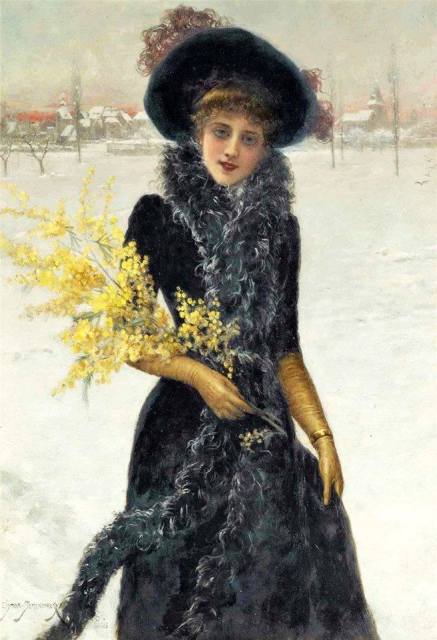
The first sign of spring (Emile Eisman-Semenowsky)
In his TV-series Mistrz i Malgorzata from 1990, the Polish director Maciej Wojtyszko (°1946) clearly shows how the master dislikes yellow flowers.
Your webmaster subtitled this series and many other films and TV series based on the works of Mikhail Bulgakov in English, French, Dutch, German, Spanish and Italian. These films are available in our web shop. Click on the link below for an overview of our film catalogue.
She turned down a lane from Tverskaya
When Bulgakov and Elena Sergeevna Shilovskaya (1893-1970) met each other for the first time on February 28, 1929, they left a party on Bolshoi Gnezdnikovsky pereulok no. 10, just off Tverskaya, to stroll around Moscow.
You can read more on Bolshoi Gnezdnikovsky pereulok in the section Locations of the Master & Margarita website by clicking the arrow below.
Tverskaya
Tverskaya ulitsa still is Moscow’s main street. It was later renamed Gorki ulitsa, and then Tverskaya again. It is the road to Tver, later renamed Kalinin, now again Tver.
Varenka Manechka… striped dress
The master hardly remembers the name of the woman with whom he lived before he met Margarita. I don’t know if Bulgakov had a real prototype in mind for Varenka or Manechka «with the striped dress». Both Varenka and Manechka are Russian nicknames, the first is for Barbara, the other for Maria.
This fragment reminds of a scene in The Return, a novel written by Andrei Bely (1880-1934), pseudonym of Boris Nikolayevich Bugayev, in which the hero, Yevgeny Handrikov, after a sojourn in a psychiatric hospital, doesn't remember the name of his wife, just the colour of her dress.
Secret wife
The master's affair with Margarita mimics that of Bulgakov with Elena Sergeevna Shilovskaya (1893-1970), born Nyurenberg, who left her well-positioned military husband for the relatively less-well-off writer. At first their affair was difficult because both were married, but Elena Sergeevna eventually became Bulgakov's wife. The character of Margarita only appeared in the novel after Bulgakov met Shilovskaya.
He would never tell her name to anyone
We will learn the name of the master's lover in Book Two, but it will not be the master who reveals it.
The bureau and books from the painted floor to the sooty ceiling
In Chapter 13 the master recalls the «writing desk... and the books, books that went from the painted floor to the soot-covered ceiling». This description matches perfectly Bulgakov’s own study room.
A novel on such a strange theme
The policy toward literature adopted by the Communist party in 1928 is characterized by the term Социальный заказ [sotsialnyi zakaz] or the «social command». It was in connection with the first five-year plan and carried out by the Российская Ассоциация Пролетарских Писателей (РАПП) [Rossyskaya assotsiatsiya Proletarskikh Pisateley] (RAPP) or the Russian Association of Proletarian Writers, and the editorial boards of publishing houses. Under this policy, specific themes were dictated to writers individually with the goal of stimulating «socialist construction». The theme assigned to Bezdomny, while not directly connected with the five-year plan, is meant to further the ideological ends of the state related to religion. Although the Soviet Union was an official atheistic state, the RAPP leaders made it clear that they supported such historical themes, if treated from the «proper» Marxist point of view.
Bulgakov is specifically ridiculing the social command in the novel when his hero, the master, recalls that the editor to whom he submitted his manuscript asked him, what in his opinion was a totally idiotic question: «who had given him the idea to write a novel on such a strange theme?» A book about Pilate was clearly not foreseen in the master's social command.
There are parallels between Bulgakov's life and the life of the master. Bulgakov's first novel, The White Guard, was only partially published in a journal in 1925, but he read it to various literary groups, whose general reaction was that one could never get a work on such a subject published. The real attacks, however, came in 1926 when Bulgakov turned the novel into a hit play for the Moscow Art Theater MKhAT under the name Days of the Turbins. Nothing could have been stranger than Bulgakov's subject, which was about the fate of a pro-monarchist family in Kyiv during the Civil War. The attacks described in this chapter of The Master and Margarita are clearly distillations of the ones various critics made on Bulgakov's plays.
Ariman
Bulgakov has given the name of the Persian evil spirit Ariman to the real critic Leopold Leonidovich Averbach (1903-1939), secretary of the writers’ union, the Российская Ассоциация Пролетарских Писателей (РАПП) [Rossyskaya assotsiatsiya Proletarskikh Pisateley] (RAPP) or the Russian Association of Proletarian Writers.
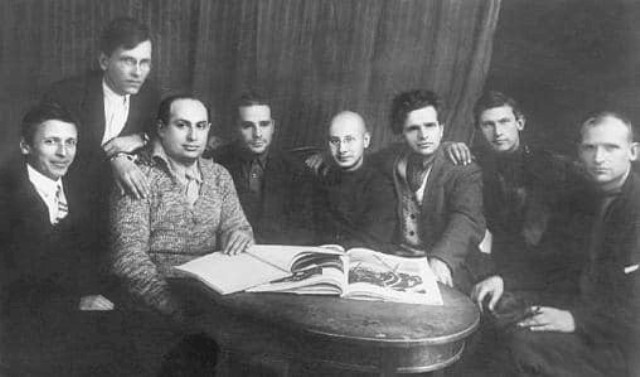
The RAPP with Leopold Averbach in the middle
Averbach was one of Bulgakov’s fiercest opponents, in 1926 he wrote За пролетарскую литературу [Za proletarskuyu lieratury] or About the Proletarian Literature, in which he called Bulgakov «the most prominent representative of the right wing».
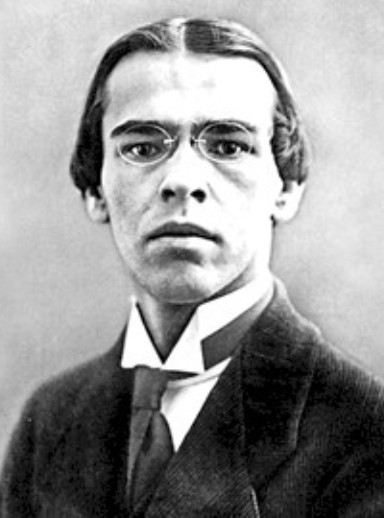
Leopold Leonidovich Averbach
Red petals strewn across the tide page
With these words, Bulgakov refers to a fact of his private life, which was told by Elena Sergeevna Shilovskaya (1893-1970) to Bulgakov specialist Marietta Omarovna Chudakova (°1937) in October 1968: «In the summer of 1929, I went to Yessentuki for a treatment. Bulgakov wrote me a nice letter, strewn with petals of red roses. But I could not keep those letters. In one of his letters he wrote: «I have prepared a worthy gift for you». When I was back in Moscow, he gave me the text of the autobiographical novella To a secret friend».
Slanting rain
The image of the slanting rain comes from the poem Back home! by Vladimir Vladimirovich Mayakovsky (1893-1930). Bulgakov must have known it from its magazine publication in 1926.
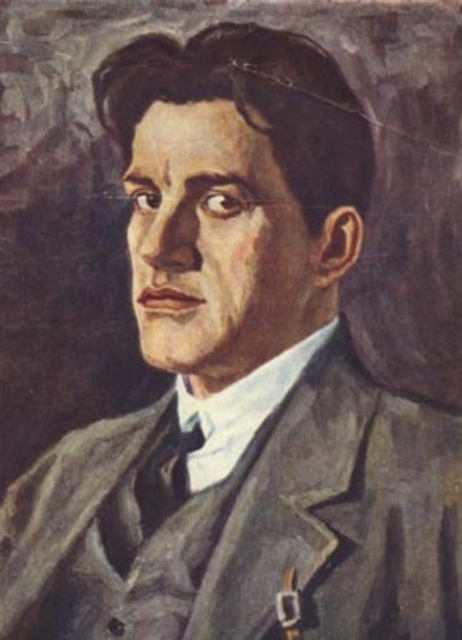
Vladimir Vladimirovich Mayakovsky
When the poet compiled it later, he deleted, on the advise of his friend Osip Maksimovich Brik (1888-1945), the last lines, probably the best of the poem. They read as follows:
I want understanding of my country, nothing more.
And what
if understanding fails to come?
Then I pass in vain
its territory
just like rain
passes over slantingly
It looks like Bulgakov identifies himself with these verses through the master.
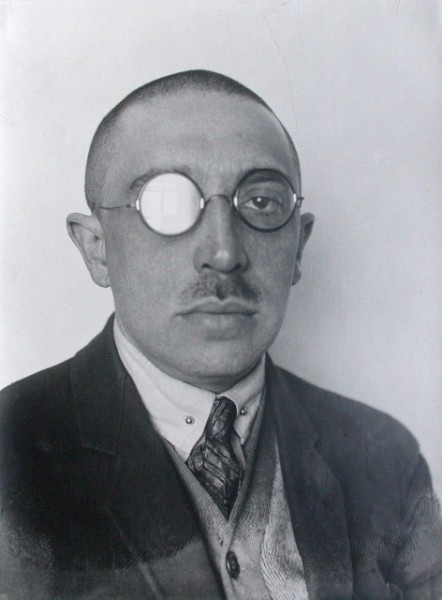
Osip Maksimovich Brik
Pilatism
Bulgakov's archives contain excerpts from the newspaper Rabochaya Moskva, in which an article was published with the title Ударим по булгаковщине! [Udarim po bulgakovshchine] or We will strike and fight against Bulgakovism! In The Master and Margarita, Lavrovich writes an article in which he recommends to Ударить по пилатчине [udarit' po pilatchine] or «striking, and striking hard, at Pilatism». Bulgakov was, like the master, attacked by the press. In his letter to the Soviet authorities in 1930 he knew exactly how often. In ten years of authorship, he had read 301 articles on him in the soviet press, «among which: laudatory - 3, hostile-abusive - 298» His theatre plays were almost all banned.
The initials «N.E.»
In the French and English translations of The Master and Margarita the initials «N.E.» are mentioned, but in the Dutch translation we read about the initials «M.Z.». In the Russian editions we find both the initials «N.E.» and the initials «M.Z.». In some Russian editions is written подписанная буквами «Н.Э.» or signed with the initials «N.E.», but in many other versions of the novel we read подписанная буквами «М.З.» or signed with the initials «M.Z.». I don't know (yet) who is «N.E.», but the real prototype for «M.Z.» is Mikhail Borisovich Zagorsky (1885-1951), a writer and critic who wrote very bitter articles on Bulgakov's theatre plays Crimson Island and The Days of the Turbins.
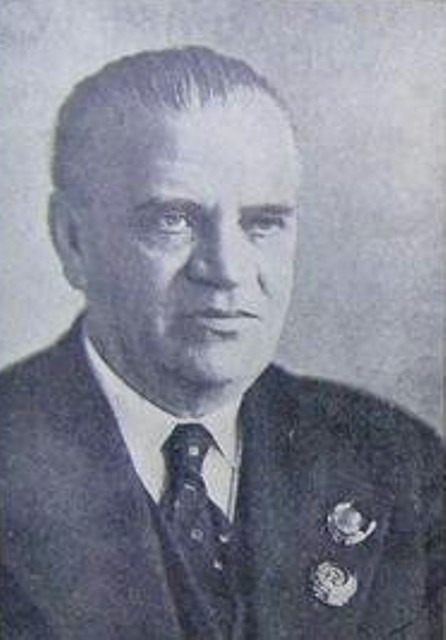
Mikhail Borisovich Zagorsky
In an earlier version of the novel Bulgakov had given a name to this character corresponding to the initials «M.Z.». He was called З. Мышьяк [Z. Mishyak], which means Z. Arsenic.
A militant Old Believer
The староверы [starovyery] or старообрядцы [staroobryadtsy] or Old Believers separated from the Russian Orthdox church in the 17th century as a protest against church reforms introduced by Patriarch Nikon of Moscow, born as Nikita Minin (1605-1681). Latunsky uses this term somewhat vainly. On October 5, 1926, Bulgakov was called, in a similar way, a militant white guard by Alexander Robertovich Orlinski (1892-1938) in Nasha Gazeta. Bulgakov's theatre play Days of the Turbins was qualified as a «political demonstration in which the author winks to the rubbish of the White Guard».
Joyless autumn days set in
The time of year is meaningful to Russian readers who have know the Soviet era, since autumn and spring were times of increased arrests, as the government tried to distract the populace from the regime's economic and cultural failures.
It may surprise the reader why I mention the character Aloisy Mogarych on this page. In the English translations of Michael Glenny and Richard Pevear and Larissa Volokhonsky - and in many others - Mogarych only appears in chapter 24, when Woland calls him to account for what he had done to the master. But in the original Russian text, Aloisy Mogarych appears already at the end of Chapter 13. The master tells Ivan how Mogarych showed up in the his garden, introduced himself as a journalist, and proved to know amazingly much about the working methods and the criteria used by the authorities to ban manuscripts. The master even tells Ivan that they became friends.
Bulgakov had based the Aloisy Mogarych character on the dramaturge Sergey Aleksandrovich Yermolinsky (1900-1984), who came to live in Mansurovsky pereulok No. 9 in 1929. That was the place where Bulgakov situated the master's basement. Lyubov Yevgenev Belozerskaya (1895-1987), Bulgakov's second wife, was especially suspicious of Yermolinsky. His third wife Elena Sergeevna Shilovskaya (1893-1970) also had doubts about Yermolinsky, but on March 5, 1940, Bulgakov had a conversation with Elena Sergeevna about Yermolinsky, and whether he could be a traitor. Bulgakov finally concluded: «Нет, не предал!» or «No, he did not betray me». The passage about the new friend from chapter 13 was crossed out in red that day, but Woland's punishment of Mogarych in chapter 24 was not deleted. Five days later, the author passed away, and we will never know if he had planned on making further changes to the Mogarych character.
So, this scene is one of the so-called loose ends of The Master and Margarita. Since Bulgakov died before he could finish the authorial text, the novel has got some imperfections. The frequent rewritings, shortenings and extensions of the novel caused some loose ends and even some contradictions in the text.
Your webmaster translated this loose end in English, and you can download it from the Archives section of this website by clicking on this arrow  .
.
In the Characters section, you can read more on Aloisy Mogarych by clicking on this arrow  .
.
On the following video, you can watch the meeting of the master and Aloisy Mogarych as it was filmed by Vladimir Bortko in his TV series Master i Margarita in 2005.
Your webmaster subtitled this series and many other films and TV series based on the works of Mikhail Bulgakov in English, French, Dutch, German, Spanish and Italian. These films are available in our web shop. Click on the link below for an overview of our film catalogue.
You can read more on Mogarych in the section Characters of the Master & Margarita website by clicking the arrow below.
And started burning them
Bulgakov himself burned a number of his manuscripts, including an early version of The Master and Margarita, in 1930, when he was effectively banned from the theaters.
There came a knock at my window...
Only Ivan can hear what follows. But to the Russian reader who has known the Soviet era, it is clear that the master is arrested. When he returns to his basement later, it becomes clear that someone else lives there now: «a gramophone was playing in my rooms». The reason is exposed in Book Two when Alois Mogarych is called to account at Woland’s.
Mid-January…
From the first chapter we know that Ivan was taken to the hospital «on a dreadful May evening». With the detail of «mid-january» we now know that the master spent some four months in «another institution».
…in the same coat but with the buttons torn off
This laconic reference is the only indication of where the master spent those lost four months. It was customary to remove belts, shoelaces and buttons from the apparel of those «held for questioning» in the Soviet Union.
Fear possessed every cell of my body
Many of the details of the master's anxiety are autobiographical. In the mid 1930's Bulgakov suffered from agoraphobia and was treated by various methods.

All films based on The Master and Margarita have been subtitled by your webmaster in English, French, Dutch, German, Spanish and Italian. Click on the images below to find them.
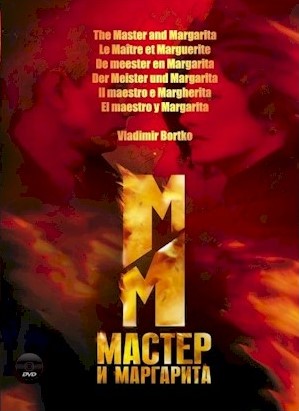 |
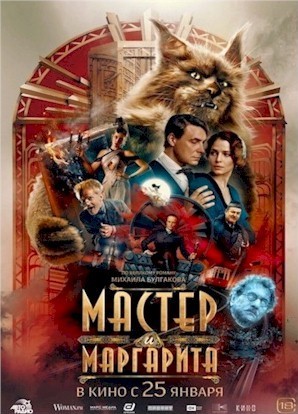 |
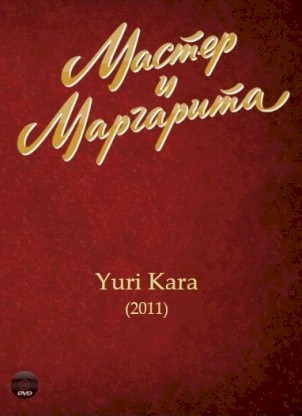 |
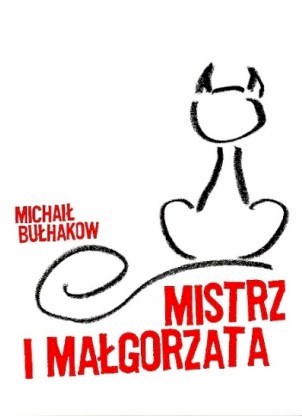 |
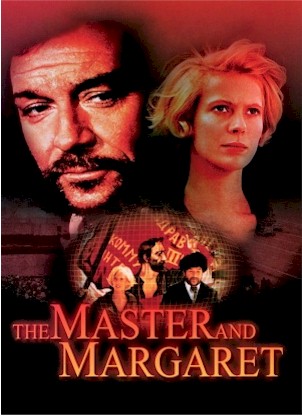 |
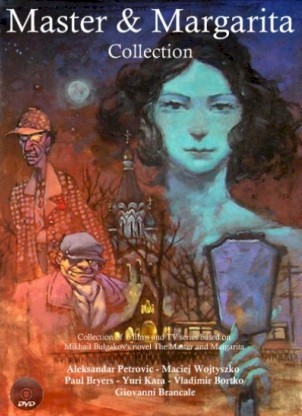 |





